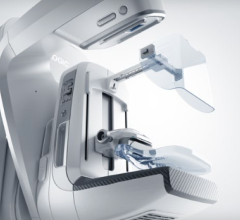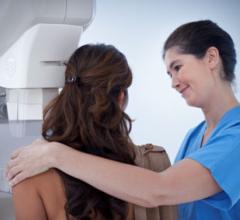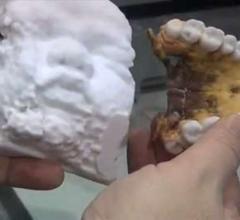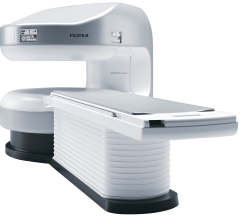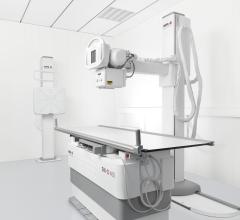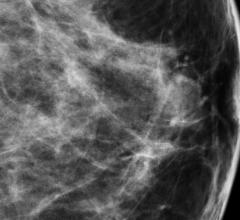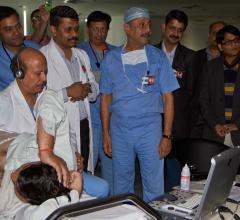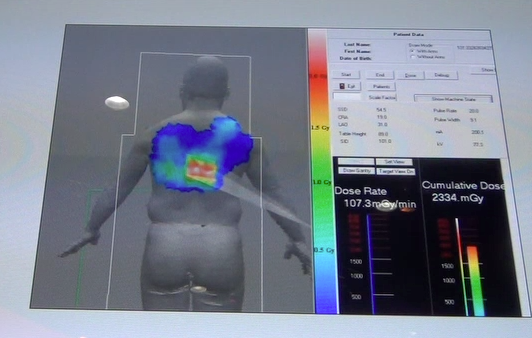At RSNA 2012, InSightec Ltd. announced U.S. Food and Drug Administration (FDA) approval for the ExAblate magnetic resonance imaging (MRI) guided focused ultrasound for treatment of painful bone metastases in patients who are not candidates for or refuse to undergo radiation treatment.
Konica Minolta Medical Imaging introduces a revolutionary auto-stitching system for use with the Aero digital radiography (DR) flat panel detector. It delivers high image quality and excellent workflow. A moving slit detects the upper and lower edge of the field, determines the number of exposures, and then quickly and accurately moves the detector to capture the images. The exposure is ready in only five seconds. Compared to traditional computed radiography (CR)/DR stitching systems, Konica Minolta’s auto stitching process can dramatically reduce patient exam time and improve technologist workflow.
December 19, 2012 — Three studies presented at the 98th annual meeting of the Radiological Society of North America (RSNA) in November reported that using bone suppression and computer-aided detection (CAD) software significantly improves the detection of lung nodules on chest X-ray images.
While most women understand the importance of health screenings, an estimated 72 million have missed or postponed a ...
Five states now mandate physicians to inform women with dense breasts that mammography may be of limited value to them. These states — Connecticut, Virginia, Texas, California and New York — require physicians to advise patients that complementary imaging studies, such as ultrasound or MRI, may be needed, if dense fibroglandular tissues are likely to obscure the mammographic signs of cancer. Their laws, however, do not say specifically who should inform patients — the physician who interprets the mammogram or the physician who regularly attends the patient.
ITN and DAIC Editor Dave Fornell highlights the latest advancements that will impact cardiovascular imaging from the ...

SPONSORED CONTENT — Fujifilm’s latest CT technology brings exceptional image quality to a compact and user- and patient ...
Imaging Technology News (ITN) is seeking readers' nominations for the top cancer centers to watch in 2013, based on their use of technology in radiation oncology. Key factors to be considered include how new technologies are being used to help improve patient outcomes, increase efficiency, reduce costs, increase patient volume, or increase reimbursements/revenues.
Fujifilm’s APERTO Lucent is a 0.4T mid-field, open MRI system addressing today’s capability and image quality needs ...
December 18, 2012 — The addition of 3-D breast imaging, or tomosynthesis, to standard digital mammography significantly increases radiologists’ diagnostic accuracy while reducing false positive recall rates, according to the results of a multicenter study published in Radiology.
December 18, 2012 — ClearCanvas Inc. has rolled out integration between the ClearCanvas open source picture archiving and communication system (PACS) and workstation and the Tumor Imaging Metrics Core (TIMC) clinical trials system developed at Massachusetts General Hospital for use in managing clinical trials across multiple institutions.
December 17, 2012 — Agfa HealthCare announced the U.S. availability of its DX-D 400, a floor-mounted X-ray suite and the newest member of the company’s imaging portfolio. The DX-D 400 is both compact and versatile and can be configured to meet specific workflow needs or budget constraints.
SPONSORED CONTENT — Fujifilm’s latest CT technology brings exceptional image quality to a compact and user- and patient ...
December 17, 2012 — A Carestream DRX-Transportable System is on its way to Antarctica as part of the latest expedition led by veteran polar explorer Sir Ranulph Fiennes. One of the last remaining polar challenges, the expedition will attempt to cross Antarctica in winter — the coldest journey on earth — a passage of nearly 4,000 kilometers, mostly in complete darkness and in temperatures as low as -90°C.
ITN Editor Dave Fornell highlights his choices for the most innovative radiology technologies and trends at Radiological ...
December 14, 2012 — KLAS has released the 2012 Best in KLAS Awards: Software and Services report ranking the best performing healthcare IT vendors in just under 100 market segments. This year, nearly 20,000 provider interviews led to a mix of newly crowned and repeat Best in KLAS winners.
SPONSORED CONTENT — EnsightTM 2.0 is the newest version of Enlitic’s data standardization software framework. Ensight is ...
December 13, 2012 — Researchers reviewing the records of approximately 250,000 women enrolled in an integrated healthcare delivery system found that increased CT (computed tomography) utilization between 2000 and 2010 could result in an increase in the risk of breast cancer for certain women, including younger patients and those who received repeat exams.
December 12, 2012 — At RSNA 2012 Samsung Medison highlighted a full line of medical devices together with Samsung Electronics Co. Ltd. The GEO brand offered by the company includes the XGEO for digital radiography, UGEO for ultrasound diagnostic system and LABGEO for in-vitro diagnostics.
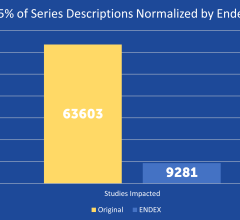
SPONSORED CONTENT — EnsightTM 2.0 is the newest version of Enlitic’s data standardization software framework. Ensight is ...
December 12, 2012 — Nearly 12 months after their first collaborative medical outreach project, the American Society of Echocardiography (ASE) and GE Healthcare are in rural northwest India again to utilize advances in cardiovascular ultrasound technology to enhance medical education for healthcare providers caring for underserved populations.
GE Healthcare introduced the new Logiq E9 with XDclear, a new general imaging ultrasound system, at RSNA 2012. Built from the acclaimed Logiq E9 platform, new features on the company’s premium product allow for increased penetration on large patients, improved clarity and diagnostic confidence.
Anthro Corporation, Technology Furniture, the Portland, Ore., manufacturer of radiology sit/stand desks, introduced the newest member of its award-winning Steve's Station family. The ergonomic design of Steve's Curve wraps displays around the user for comfortable viewing and positions equipment within easy reach. The addition of this curved model gives imaging professionals a total of four Steve's Station desk options with a variety of shapes and features. Steve's Curve will be available 2013 and was shown for the first time at RSNA, November 25-30 in Chicago.
Alere Wellogic, the health information arm of Alere Inc., announced that its Electronic Health Record (EHR) system is now available to help radiologists and imaging centers achieve "meaningful use" certification and qualify for incentives as part of the federal Meaningful Use Program. The solution was on display at the Radiological Society of North America's (RSNA) 98th Scientific Assembly and Annual Meeting, held from November 26th-30th at McCormick Place in Chicago.
Konica Minolta Medical Imaging introduces another innovation for the wireless Aero digital radiography (DR) — the new AeroSync X-ray exposure synchronization technology. With AeroSync, facilities can easily upgrade existing analog portable X-ray systems not fitted with DR interfaces into digital systems.
The latest advances in cardiovascular imaging are usually shown first at the Radiological Society of North America (RSNA) annual meeting, the largest radiology show in the world, held the last week of November in Chicago. After spending five days walking three expo halls filled with more than 600 product vendors, the following is my editor’s choice for the most innovative new cardiovascular imaging technology.


 December 19, 2012
December 19, 2012 


